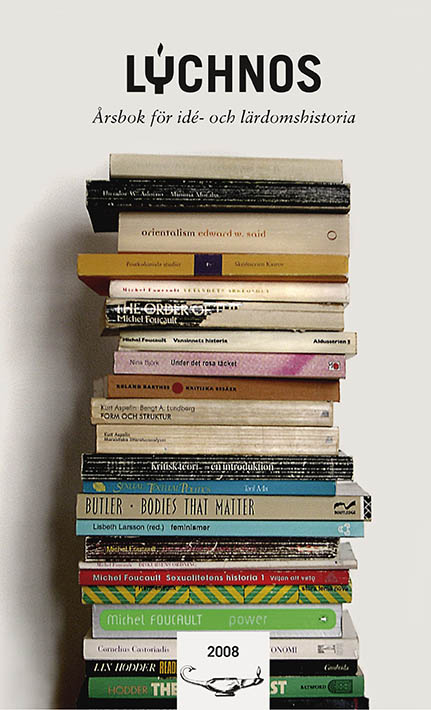”The queer disappearance of Butler”
When Swedish feminist research introduced Judith Butler, 1990–2002
Abstract
This article on the Swedish reception of the work and theories of feminist philosopher Judith Butler follows four feminist fields that introduced and discussed Butler’s work from the early 1990’s to the early 2000’s; the first and earliest being the radical feminist field, followed by the field of feminist literary studies, the field of queer theory and, as a field of its own, the various translations made during this period.
Some main tendencies can be discerned: the translation of Butler’s con- cept of gender as either ”kön” or ”genus” has varied over time; the feminist literary field is dominated by a critical approach to Butler, while the radical feminist field is more ambivalent. All fields categorize Butler as a social constructivist. The radical feminists seem to introduce Butler as a theorist of sexuality, especially of the norms of heterosexuality, while the literature feminists almost completely ignore Butler’s take on desire and rather emphasize (and criticize) Butler’s definition of woman (as a subject). The connection with queer theory seems to have been somewhat weak with few and quite short references to Butler with the exception of queer theorist Tiina Rosenberg, who made a strong link between Butler and performance studies. In all fields references to Gender trouble are by far the most recurring, while later works by Butler (1993 and onwards) are less frequently cited and sometimes even completely absent. Applied studies are surprisingly rare (and only found in doctorial thesis in ethnology, sociology, philosophy, and archeology). Parts of chapter three from Gender trouble were translated in 1997 and later on reprinted and retransla- ted in different contexts and hence widely read and referred to. The first translations of other texts were published very late (2002) and consisted of a selection made by Rosenberg, focusing mainly on performativity. The critical stance has continued to dominate during the entire period and Butler is either dismissed for being too unrealistic or too dangerous for feminism. Meanwhile, other academic fields and media mainly reproduce this (paradoxical) image where the main tendency is to use the ”foolery” of Butler to criticize both feminism and poststructuralism. With only one exception – the (internationally published) literature researcher Cecilia Sjöholm – none of the researchers has introduced or discussed Butler’s relation to and revision of psychoanalysis, phenomenology or the sexual difference school.
Downloads
Published
Issue
Section
License
This work is licensed under a Creative Commons Attribution 4.0 International License. The copyright for the work published in Lychnos remains with the authors.


